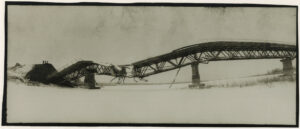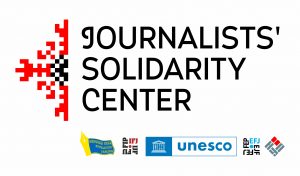Vladyslav Krasnoshchok from Kharkiv shoots the war in Ukraine in black and white. He plans to combine all the collected materials into a book and thus create a true visual history. But quite often, these shootings become dangerous. In July 2024, when he was filming the work of artillerymen of one of the brigades of the Armed Forces of Ukraine, he came under fire, after which he received a concussion.
Vladyslav Krasnoshchok has been photographing for over 15 years. He combines photography with medicine. By profession, he is a maxillofacial surgeon. He worked for a long time in a city clinical hospital for emergency and urgent medical care. Now, he is a dentist-implantologist-surgeon in a private clinic.
Through the lens, the photographer documents the stories of soldiers and volunteers showing Ukrainian cities destroyed by the enemy army. He recorded events in his native Kharkiv and traveled to Kyiv, Donetsk, Zaporizhzhia, Mykolayiv, Kherson, and Luhansk Regions.
“I once dreamed of filming the war, but I never thought that it would come to us in Ukraine,” says Vladyslav Krasnoshchok. “With the beginning of the full-scale invasion, I realized that I had to film it all. This is history, and it needs to be preserved. I want to record this war beautifully. The way I understand it is in my vision. First, I shoot on black and white film, then I develop and print everything in the red room. After that, I scan the paper prints.”
He recalls that at the beginning of the war, any person on the street with a camera or a phone in their hands caused aggression. So, in order to record events directly on the front line or in civilian areas that are being shelled by the russian army, I received accreditation from the Armed Forces of Ukraine.
At one time, he practiced in the genre of street photography. He filmed the events of the Maidan in 2014. He covered the chronicle of the anti-terrorist operation through the lens of a camera. This experience taught him to “catch” shots where there are dynamics and, as Vladyslav himself says, allows him to “do great work in a short time.” He sees its result only after the film is developed.












“Our shots will not go anywhere from us. If you didn’t shoot, then you didn’t shoot. It often happens that you go after one and don’t get it. But you always return from any business trip with some shots,” the author shares. “Every step is new information from this journey, so you will definitely bring 2,3,10 shots.”
On July 19, 2024, Vladyslav Krasnoshchok, together with his colleague Olha Kovaliova, filmed the work of artillerymen of one of the brigades of the Armed Forces of Ukraine. Literally immediately, the enemy began shelling the position. Journalists waited for him and the soldiers in the dugout, where the shell fragments had hit. Vladyslav received a concussion, Olha – shrapnel wounds.
“Unfortunately, this is the kind of thing that can happen to anyone who films a war,” he says. “It’s good that everyone survived then, but the bad thing is that Olha is still rehabilitating her hand, and it doesn’t function properly yet. In general, a trip to the front is a kind of lottery for us.”
In his opinion, work on the front has become more difficult and even more dangerous for documentary filmmakers.
“You’re like in the Amazon jungle, and everything around you wants to kill you,” Vladyslav says and adds that he will continue to film the war. “And how else? I don’t need to make news; I don’t get paid for it. I do it because I like it, and it’s very important for history.”
Vladyslav shared that in his arsenal, there are works that no one has seen yet. However, he says, they will be understandable only with time.
With all the risks that accompany filming on the front line, the most difficult thing is to get permission to shoot.
“When you are a Ukrainian photographer, press officers are not always interested,” says Vladyslav Krasnoshchok. “Because you will show your work here, here, but you need it somewhere abroad.”

In search of a strong frame, he emphasizes, it is always worth taking care of safety and in the same context, plan your trip well.
“It is important to plan the route and decide, first of all, for yourself: what prevails between this or that frame and the potential threat. You need to take care of your safety because if you die – you will do nothing more; they will remember you for a maximum of a week. That’s it. If you really need this shot, you are going to shoot, but it is dangerous at the moment, then maybe you should go another time,” the photographer says. “Personally, I am interested in shooting on the front line. I am ready to do it, but I cannot say that I am ready to die for a photo. You always need to take care of safety.”
“JOURNALISTS ARE IMPORTANT. Stories of life and work in war conditions” is a series of materials prepared by the team of the National Union of Journalists of Ukraine with the support of the Swedish human rights organization Civil Rights Defenders.

 THE NATIONAL UNION OF
JOURNALISTS OF UKRAINE
THE NATIONAL UNION OF
JOURNALISTS OF UKRAINE
















Discussion about this post